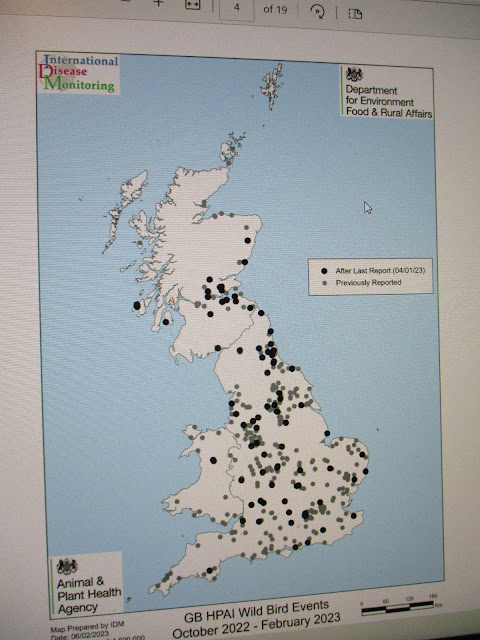.JPG) |
| Handsome drake pintail on a water in Lincolnshire (but what is the bird behind it?) |
UPDATED avian influenza research reveals infections in 152 wild birds across 16 species at 74 separate locations in Great Britain between January 4 and February 6 this year.
This brings the total number of individual victims counted since October last year to 794.
The greatest number of findings continues to be among waterbirds/waders (105), especially mute swans, and birds of prey (42), especially peregrines and tawny owls.
Pheasants are also increasingly being infected.
It is thought likely that smaller passerine birds are also falling victim, especially given the rising number of sparrowhawk deaths, but the data is very sparse, the only record being of pigeons and of a single great spotted woodpecker.
Among the more uncommon species to have fallen victim (one instance apiece since January 4) to the fatal disease are: great white egret (pictured below), pintail, hen harrier( a bird in Scotland) and red-throated diver.
A report from Defra states: "The increase in day length and ambient temperatures in the coming weeks will reduce survival of the HPAI H5N1 virus in Great Britain although circulation of virus in waterbirds may be maintained until their spring dispersal in early April.
" It remains to be seen what effect the gathering of seabirds to breeding colonies has on virus transmission in those species."
It continues: "Wild bird cases appear to be increasing in continental Europe in January with detections across much of central and eastern Europe and not just in north-western Europe as earlier in the winter.
"There is still an ongoing cluster of wild bird cases in north-east Italy.
"The ongoing presence of HPAIV in wild birds in north-western Europe in early February is of little concern to Great Britain compared to four months ago as a potential source of infection for ducks, geese and swans migrating west to our shores because all of those birds arrived here at least a month ago."
The document goes on: "The overall infection pressure from wild birds on poultry is undoubtedly still very high given the ongoing levels of wild bird detections and the high environmental viral load which will remain infectious for prolonged periods, particularly with the low temperatures in winter in Great Britain.
"For these reasons, the national risk level for HPAI H5 in wild birds is maintained at very high level."


No comments:
Post a Comment